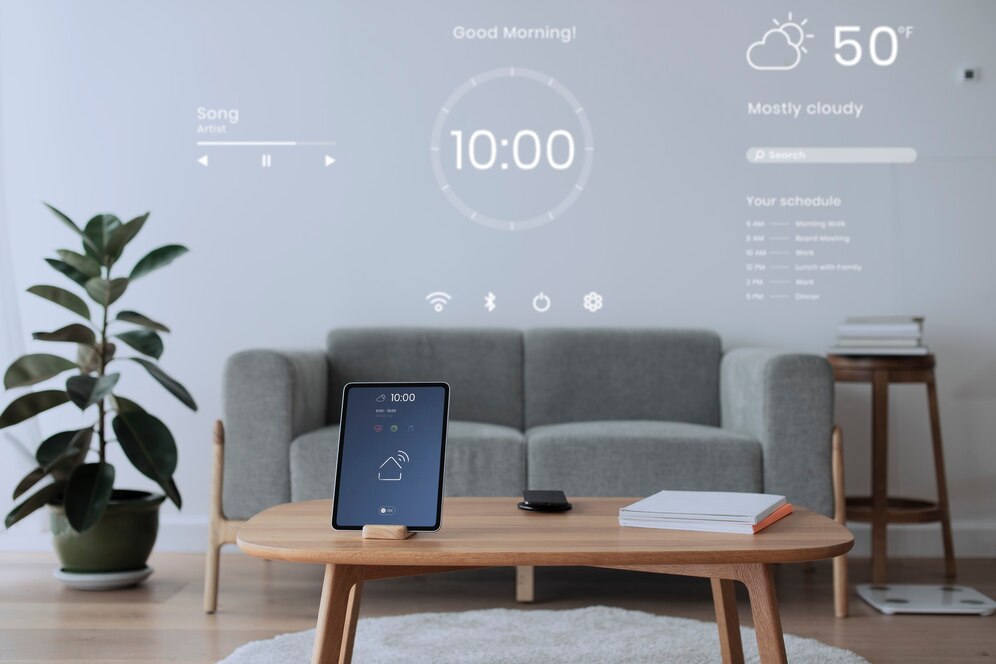Control your home with your voice, phone—or just automatically.
Smart homes aren’t just for tech geeks anymore. Whether you’re looking to boost convenience, improve security, or save on energy bills, building a smart home is more accessible than ever—and you don’t need to rewire your entire house to do it.
This beginner’s guide breaks down what you need, how to get started, and which devices give you the best bang for your buck. Ready to make your home smarter, not harder? Let’s go.
Step 1: Choose Your Smart Home Ecosystem
Before you start buying devices, decide which ecosystem you want everything to connect through. This makes setup smoother and ensures your devices play nice with each other.
The Big Three:
-
Amazon Alexa – Compatible with tons of devices, budget-friendly options, and voice control via Echo speakers.
-
Google Home – Great for Android users, Google Assistant integration, and top-tier voice recognition.
-
Apple HomeKit – Best for iPhone users, with tight privacy controls and automation through the Home app.
Pick the one that works best with the devices you already use (your phone, tablet, or smart speaker). Once you pick a lane, stick with it to avoid compatibility headaches.
Step 2: Start With These Core Devices
You don’t need to buy everything at once. Here are smart devices that offer the most impact for first-timers:
1. Smart Speakers or Displays
This acts as your control hub—use it to manage your smart home with voice commands.
-
Amazon Echo, Google Nest Hub, or Apple HomePod Mini
2. Smart Plugs
Instantly turn “dumb” devices smart by plugging them into these. Control lamps, coffee makers, fans, or even Christmas lights.
-
Great for automation and voice commands.
3. Smart Bulbs
Change the lighting, color, or brightness with your phone or voice.
-
Look for Philips Hue, LIFX, or TP-Link Kasa.
4. Smart Thermostat
Save money by setting schedules or adjusting temperature remotely.
-
Nest and ecobee are popular and easy to use.
5. Video Doorbell
Get motion alerts, talk to visitors, or monitor packages—right from your phone.
-
Ring, Arlo, and Google Nest Doorbell are solid picks.
6. Smart Locks
Keyless entry with phone control or passcodes.
-
Look for August Smart Lock or Yale Assure Lock.
Step 3: Connect Everything in One App
Most ecosystems (Alexa, Google Home, Apple Home) let you control everything in one place via their mobile apps. Once your devices are connected:
-
Assign them to rooms
-
Create voice commands like “Goodnight” or “Movie time”
-
Set automation rules like “Turn off all lights at 11 PM” or “Turn on the coffee maker at 7 AM”
Pro Tip: Use your voice assistant to create “routines.” One command, multiple actions.
Step 4: Add Smart Scenes & Automations
Once you’ve got the basics working, level up your smart home with automation. Here are some ideas:
-
Coming Home: Lights on, thermostat adjusted, and your favorite playlist starts
-
Leaving the House: Turn off lights, arm the camera, lock the door
-
Bedtime Routine: Dim lights, lower thermostat, and turn on a white noise machine
You can trigger these routines by time, location (geofencing), motion sensors, or voice.
Step 5: Keep It Secure
Smart homes are awesome—but don’t forget to lock down your digital doors too:
-
Use strong, unique passwords for each device and app.
-
Enable two-factor authentication on your ecosystem account.
-
Update firmware regularly to keep devices secure.
-
Consider a separate guest Wi-Fi network for your smart gadgets.
Smart Home Starter Kits (Optional but Helpful)
If you want a no-hassle jumpstart, many companies offer starter kits that include a speaker, bulbs, and plugs bundled together. These can save money and simplify setup.
Build Slowly, Build Smart
You don’t need to drop thousands of dollars to create a smart home. Start with a few key devices that match your lifestyle, and expand from there. The goal isn’t just automation—it’s making your home work better for you.

